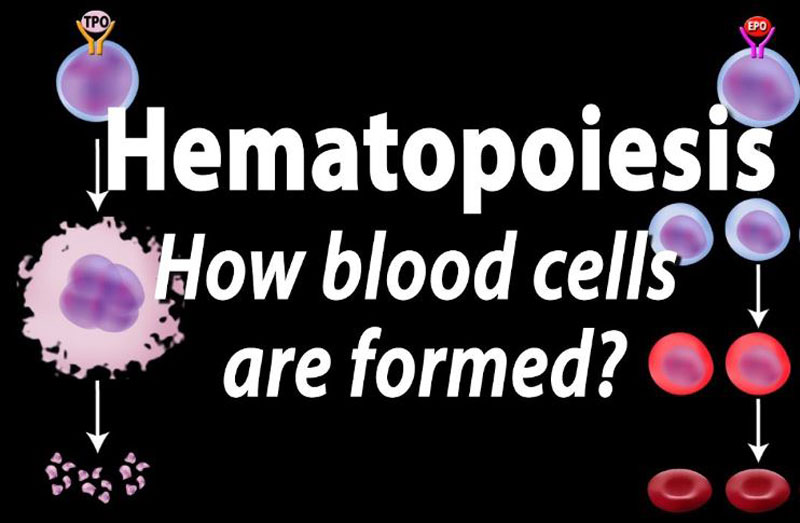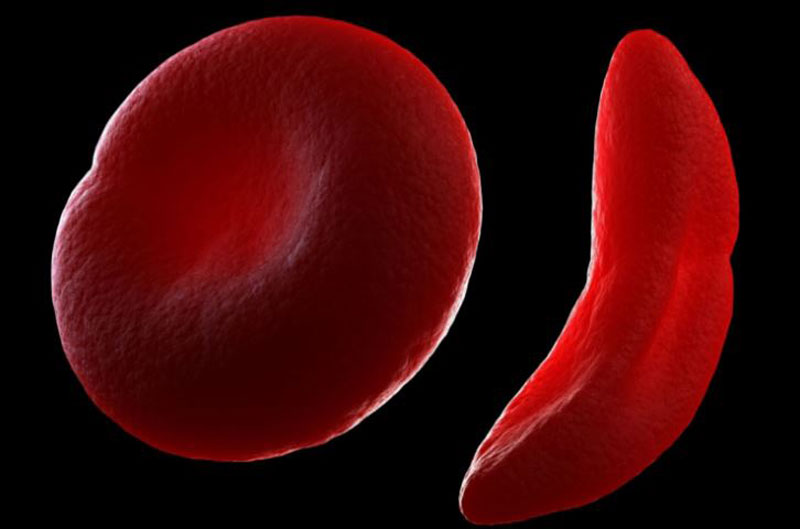Hematopoiesis is a condition of all blood cellular components and blood plasma produced in the hematopoietic system which includes organs and tissues. Examples are the liver, bone marrow and spleen.
We say that hematopoiesis is a process of producing blood cells. The process has begun since the early development of the embryo.
So, the process of producing blood cells has been started since the baby is not born until the baby is born and entered into social life.
Some Facts about Hematopoiesis
The producing of blood cells has begun during the first week of embryonic development.
All blood cells and plasma produced will develop into stem cells and become other cells.
What is Hematopoiesis?

Hematopoiesis consists of 10 different cells, these cells are divided into the following three groups.
1. Red blood cells or erythrocytes
The function of red blood cells is to carry oxygen and hemoglobin throughout the body
2. White blood cells or leukocytes
The function of white blood cells is to form immunity. There are several kinds of white blood cells. Below is the explanation.
- Lymphocytes: These are T cells and B cells that function to fight viruses and tumors.
- Neutrophils: These white blood cells are useful for fighting bacteria and fungi
- Eosinophils: Serves to fight parasites and inflammation
- Basophils: These cells function to release histemin which is useful for the response to inflammation
- Macrophages: These engulf and digest debris, like bacteria
Also read: How To Spot The Signs Of A Diabetic Ulcer On The Foot
3. Platelets or thrombocytes
Blood cells platelets function for blood clotting
Now there are theories that support hematopoiesis, this theory is called monophyletic. The teachings in this theory explain that one stem cell can produce many blood cells or even all blood cells.
Where does Hematopoiesis Occur?
The producing blood cells can occur in many places, including embryo
Hematopoiesis in the embryo
The process in producing blood cells in embryos is also called primitive hematopoiesis. it produces red blood cells which only play a role in sending oxygen to the organs needed for the development of these organs.
At this time, the yolk sac and functioning to maintain the embryo and placenta develops completely and it controls the process of producing blood cells.
As the embryo continues to develop, the subsequent process of producing blood cells moves to other organs such as the liver, bone marrow, spleen, and now it has begun to produce other blood cells.
Also read: Marcus Gunn Pupils
If someone is an adult, then the process of hematopoiesis occurs in the spinal cord. While in children and infants, this process also continues in the spleen and liver.
In other side, lymph systems such as the spleen, lymph nodes, thymus, usually produce white blood cells called lymphocytes. While lymph tissue, spleen, and liver also produce other types of white blood cells called monocytes.
Hematopoiesis Process
The amount of blood cells depends on the state of the body. The body continuously produces new cells and about 1% of these blood cells are replaced every day.
While white blood cells are blood cells with the shortest life time, they can live for only a few hours to several days. While red blood cells can last for 120 days or even longer.
The hematopoiesis process starts initially with the presence of unspecified stem cells. These stem cells will multiply themselves and multiply themselves, some of the new cells that occur will turn into precursors.
These are cells that will later become blood cells, but at this stage it is not fully developed. However, when immature, these cells immediately divide into blood cells either white blood cells, red blood cells or become platelets.
Scientists do understand this hematopoiesis, but until now there are still differing views on how stem cells proceed in this blood cells process.
Types of Hematopoiesis
Blood cells have sometimes different life paths for producing blood cells. Everything starts from stem cells called hematopoietic stem cells (HSC). Starting from this stage, producing blood cells follows a different development path.
Trilineage hematopoiesis is a hematopoiesis which refers to three types of blood cells: These are platelets, white blood cells and red blood cells.
Each cell will experience changes in HSC into cells called Common Myeloid Progenitors (CMP). Then, the process will be different, here the precursor cells will be more controlled and organized.
Red blood cells and platelets

Red blood cells are CPM cells that change five times, after this process only becomes red blood intact or erythrocytes. While platelets are CMP cells that change into three different cell types, then only platelets.
White blood cells
White blood cells are not just one type, but there are several types of white blood cells. Each of these sleek white blood follows the path of hematopoiesis.
Basically, white blood cells change from CMP to myeoblasts. The next step will be something like this:
When it has not yet become a neutrophil, basophil, or eosinophil, a cell that has become myeoblast will pass through four stages of development.
To become a macrophage, cells that have become myeoblasts must undergo a process of change three times.
While the second pathway from hematopoiesis is to produce T cells and B cells.
T cells and B cells. To be able to produce lymphocytes, the MHC will first turn into common lymphoid progenitors cells, then only turn into lymphoblasts.
Also see: While Taking Doxycycline, Can You Drink Alcohol?
These lymphoblasts will then become T cells and B cells. While B cells then turn again into plasma if exposed to infection.
Hematopoiesis Impact on health

Abnormalities that occur in the blood can cause effects on healthy blood cells, even though they occur while still in a state of hematopoiesis.
Let us see the example below
Cancer of white blood cells (leukemia) and lymphomas can change white blood cells while in the bloodstream.
Likewise tumors in hematopoietic tissue that produce blood cells, such as those that occur in the bone marrow that can affect blood cells.
The aging process that occurs in a person causes fat to accumulate in the spinal cord. This will become an obstacle and difficult for the bone marrow to be able to produce blood cells.
If a condition such as a disease and the body needs lots of blood cells, then the spinal cord will have difficulty fulfilling this request.
In these circumstances, the body can experience anemia or lack of blood, which currently occurs in the lack of hemoglobin in blood cells.
Hematopoiesis is a constant process that can produce many blood cells. The number of blood cells produced can vary depending on the body’s needs.
But on normal days and under normal conditions, every day the body can produce about 200 billion of red blood cells, 10 million white blood cells, and about 400 billion platelets.
That’s what hematopoiesis does in the human body in human development itself. Thus a brief description of processing of producing blood cells, place of occurrence, type of hematopoiesis, processes and effects on health.
Sources:
https://pubmed.ncbi.nlm.nih.gov/27695457/
https://www.ncbi.nlm.nih.gov/pmc/articles/PMC3666375/
https://www.cancer.gov/publications/dictionaries/cancer-terms/def/hematopoietic-stem-cell
https://www.ncbi.nlm.nih.gov/pmc/articles/PMC5483665/
















